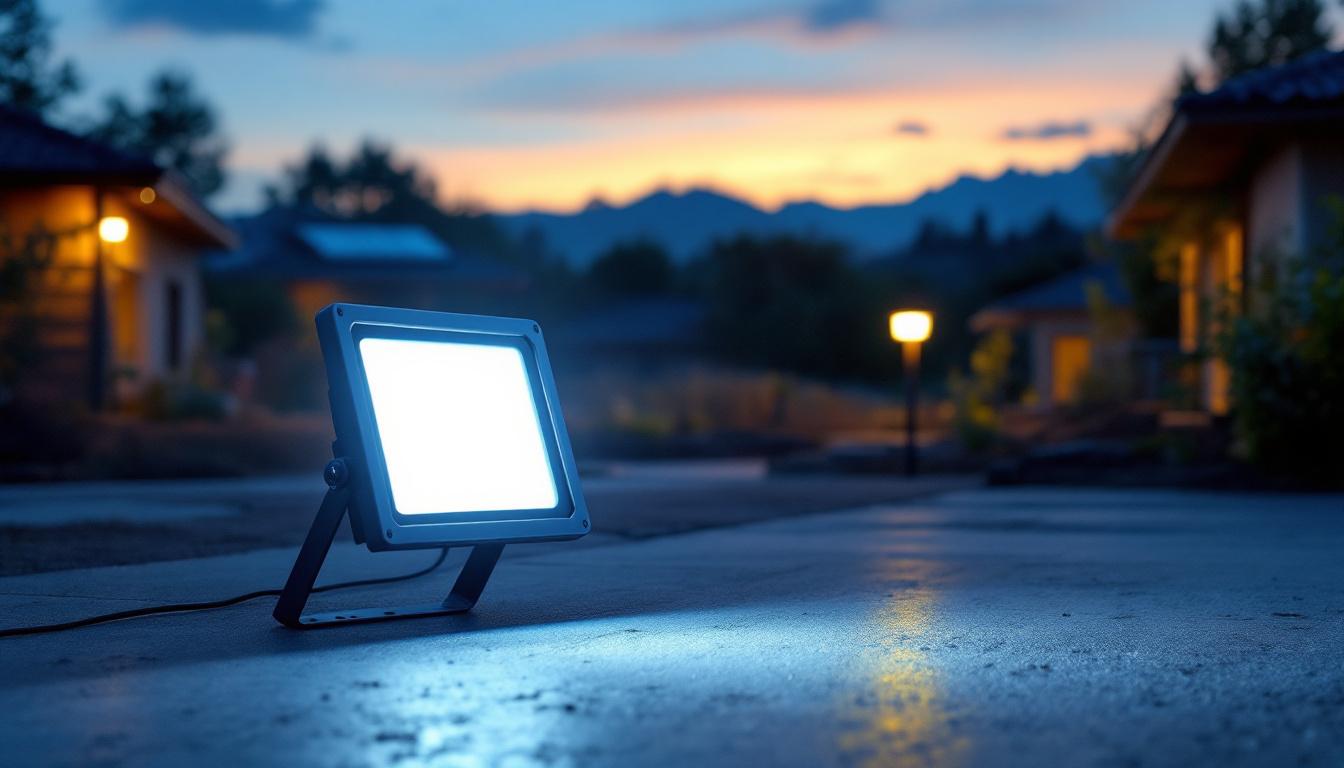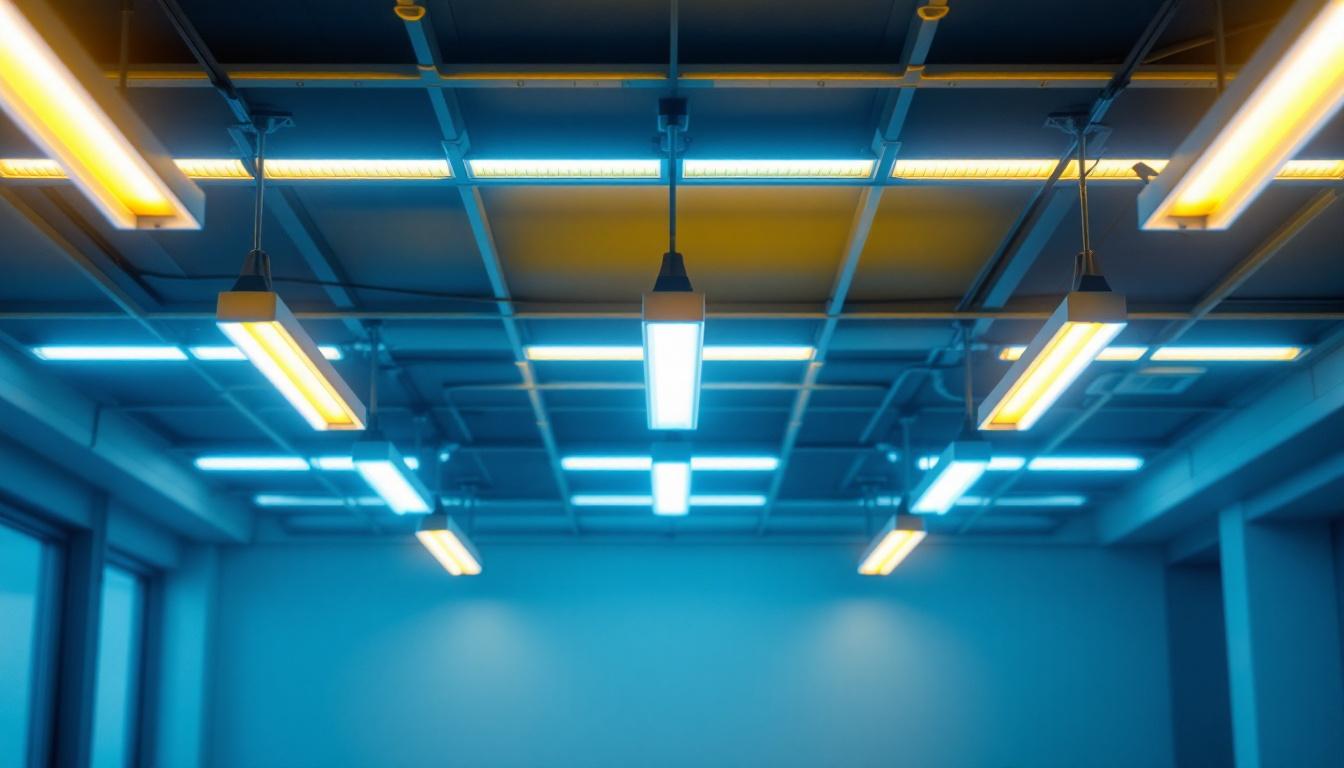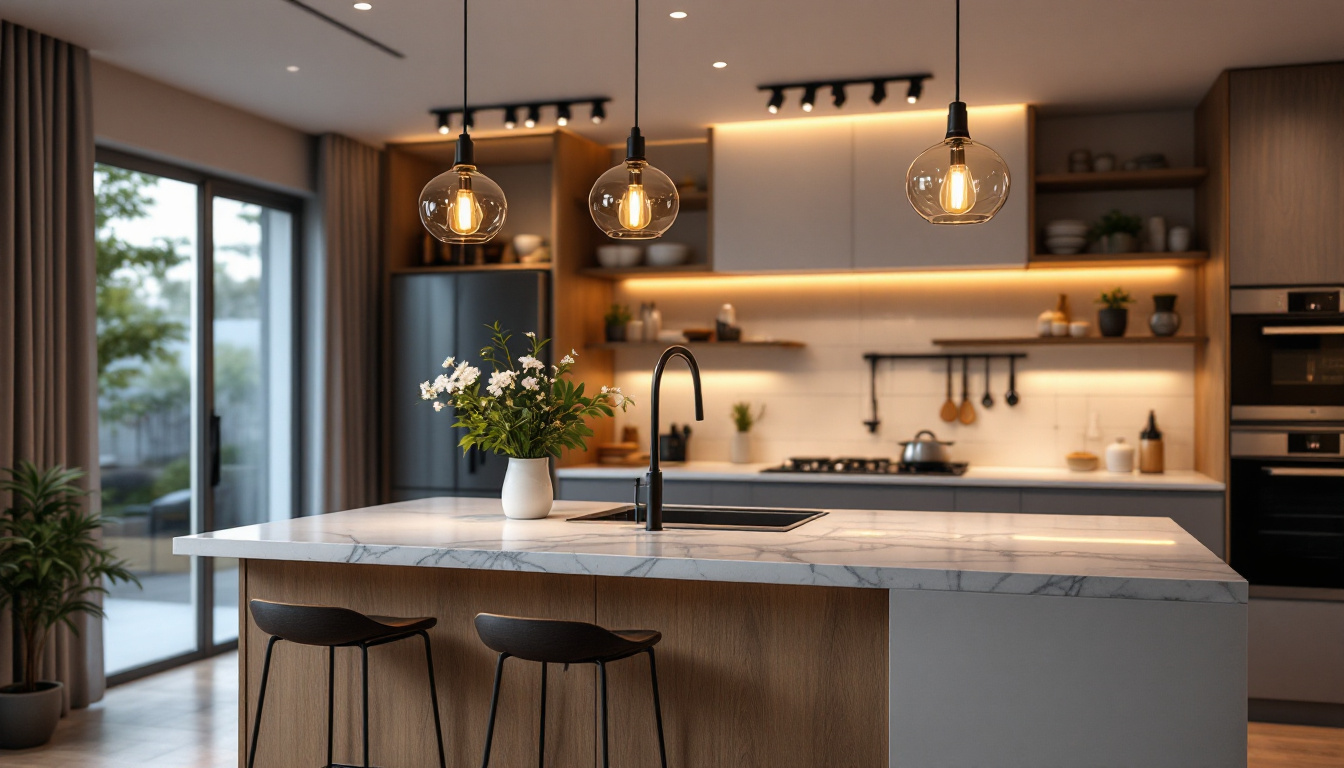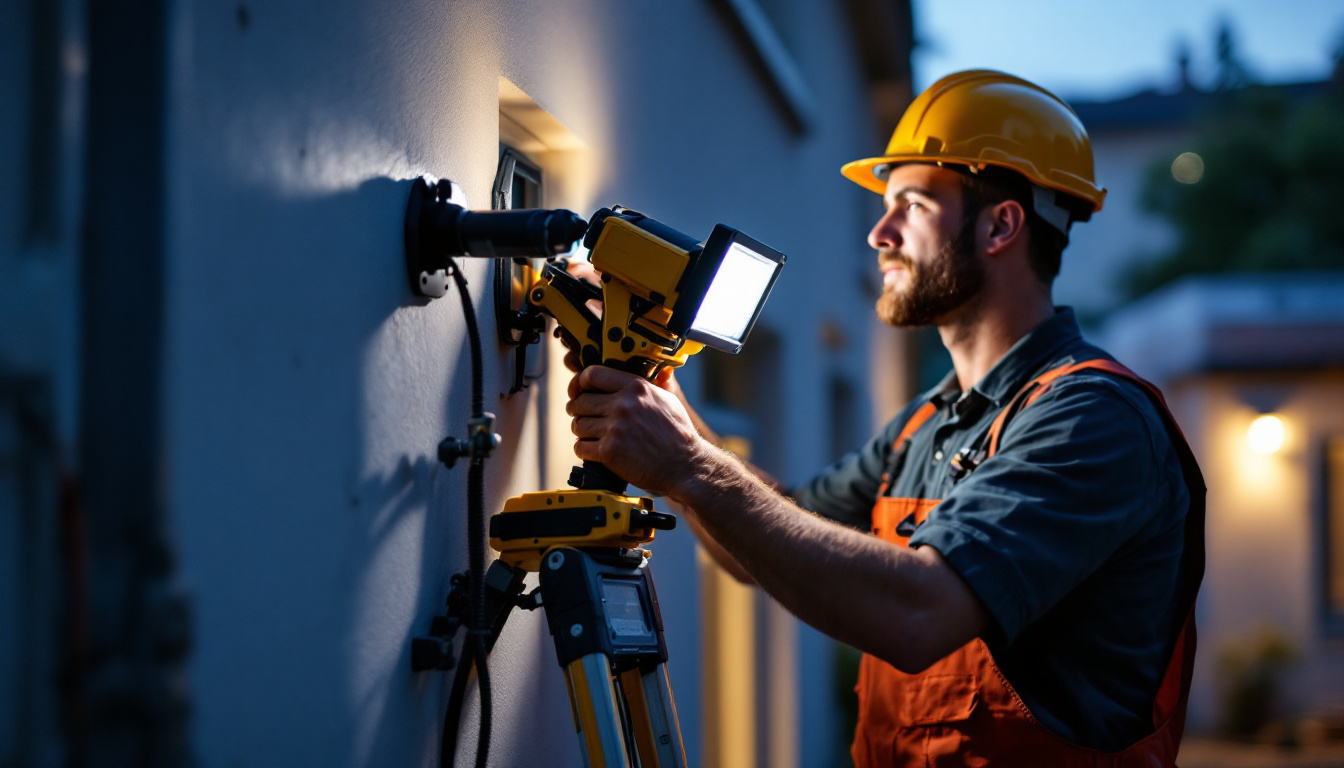
In recent years, the lighting industry has witnessed a significant shift towards energy-efficient solutions. Among these, 4-foot LED tube bulbs have emerged as a popular choice for both commercial and residential applications. For lighting contractors, understanding the science behind these bulbs is crucial for making informed decisions and providing clients with optimal lighting solutions. This article delves into the technology, benefits, and applications of 4-foot LED tube bulbs, equipping contractors with the knowledge they need to excel in their field.
4-foot LED tube bulbs are linear lighting solutions designed to replace traditional fluorescent tubes. These bulbs typically measure 48 inches in length and are commonly used in a variety of settings, including offices, warehouses, and retail spaces. Unlike incandescent or fluorescent bulbs, LED tubes utilize light-emitting diodes (LEDs) to produce illumination, offering numerous advantages in terms of efficiency and longevity. With their ability to last up to 50,000 hours, LED tube bulbs significantly reduce the frequency of replacements, leading to lower maintenance costs and less waste in landfills.
The construction of 4-foot LED tube bulbs is a key factor in their performance. Most LED tubes consist of a durable plastic or glass exterior that houses the LED chips and electronic components. This design not only protects the internal components but also contributes to the overall aesthetic appeal of the fixture. Additionally, many LED tubes feature a frosted or clear lens that helps diffuse light evenly, reducing glare and enhancing visual comfort. Some models even come with adjustable color temperatures, allowing users to select warm, neutral, or cool light to suit different environments and activities, from focused work to relaxed social gatherings.
There are several types of 4-foot LED tube bulbs available on the market, each designed to meet specific needs. The most common types include:
In addition to these standard types, some manufacturers have begun introducing smart LED tube bulbs that can be controlled via smartphone apps or voice-activated systems. These advanced options allow users to adjust brightness levels, set schedules, and even change colors, making them ideal for modern, tech-savvy environments. Furthermore, with the growing emphasis on sustainability, many LED tube bulbs are now designed with recyclable materials and energy-efficient manufacturing processes, further reducing their environmental impact.
Understanding the science behind LED technology is essential for lighting contractors who wish to maximize the benefits of 4-foot LED tube bulbs. LEDs work on the principle of electroluminescence, where a semiconductor material emits light when an electric current passes through it.
The core of an LED is a semiconductor chip, typically made from materials like gallium arsenide or gallium nitride. When electricity flows through the chip, electrons recombine with holes (the absence of electrons) within the semiconductor, releasing energy in the form of photons. This process is highly efficient, resulting in minimal heat production compared to traditional lighting technologies.
Color temperature and Color Rendering Index (CRI) are critical factors in determining the quality of light produced by 4-foot LED tube bulbs. Color temperature is measured in Kelvin (K) and indicates whether the light appears warm (lower K values) or cool (higher K values). Common color temperatures for LED tubes range from 2700K (warm white) to 5000K (daylight).
CRI, on the other hand, measures how accurately a light source displays colors compared to natural light. A higher CRI (close to 100) means that colors will appear more vibrant and true to life. For commercial applications, a CRI of 80 or above is typically recommended to ensure adequate color representation.
The advantages of using 4-foot LED tube bulbs are manifold, making them an attractive option for lighting contractors and their clients. From energy savings to environmental benefits, these bulbs offer a range of features that enhance their appeal.
One of the most significant benefits of 4-foot LED tube bulbs is their energy efficiency. LED technology consumes significantly less power than traditional fluorescent tubes, often using up to 50% less energy. This reduction in energy consumption translates to lower utility bills for clients and a reduced carbon footprint, making LED tubes an environmentally friendly choice.
LED tube bulbs are designed to last much longer than their fluorescent counterparts. While a typical fluorescent tube may last around 10,000 hours, a quality LED tube can last upwards of 50,000 hours or more. This extended lifespan means fewer replacements and lower maintenance costs, which is a significant advantage for contractors and clients alike.
Unlike fluorescent tubes that may take time to warm up, 4-foot LED tube bulbs provide instant illumination at full brightness. This feature enhances user experience in commercial settings where immediate lighting is essential. Additionally, many LED tubes are compatible with dimming systems, allowing for greater control over lighting levels and energy usage.
4-foot LED tube bulbs are versatile lighting solutions suitable for a wide range of applications. Understanding where and how to use these bulbs effectively can help lighting contractors provide tailored solutions for their clients.
In commercial environments, 4-foot LED tube bulbs are commonly used in offices, retail stores, and warehouses. Their energy efficiency and long lifespan make them ideal for spaces that require consistent lighting throughout the day. In addition, the availability of different color temperatures allows contractors to customize the lighting to match the ambiance of the space.
In industrial settings, such as manufacturing facilities and distribution centers, 4-foot LED tube bulbs provide bright, reliable lighting that enhances visibility and safety. Their durability and resistance to shock and vibration make them suitable for harsh environments, where traditional lighting may fail. Furthermore, the energy savings associated with LED technology can significantly impact operational costs in large facilities.
Homeowners are increasingly turning to 4-foot LED tube bulbs for their residential lighting needs. These bulbs can be used in garages, basements, and kitchens, providing efficient and effective lighting solutions. The ability to choose from various color temperatures allows homeowners to create the desired atmosphere in their living spaces.
When installing 4-foot LED tube bulbs, contractors must consider several factors to ensure optimal performance and client satisfaction. Proper installation techniques can significantly impact the longevity and efficiency of the lighting system.
Before installation, it is essential to evaluate the compatibility of existing fixtures with the chosen LED tube bulbs. Direct replacement tubes can typically be installed in existing fluorescent fixtures without modification. However, for ballast bypass tubes, contractors must remove the ballast and rewire the fixture to ensure proper operation.
Electrical safety is paramount during installation. Contractors should adhere to local electrical codes and regulations, ensuring that all wiring is done correctly to avoid potential hazards. It is advisable to turn off power to the fixture before beginning any work and to use appropriate personal protective equipment.
After installation, testing the lighting system is crucial to ensure that the bulbs are functioning correctly. Contractors should check for any flickering or inconsistent brightness, which may indicate wiring issues or compatibility problems. Conducting a thorough quality assurance check helps to guarantee client satisfaction and reinforces the contractor’s reputation for quality work.
The lighting industry is continuously evolving, and several trends are shaping the future of LED technology. Contractors should stay informed about these developments to remain competitive and provide cutting-edge solutions to their clients.
As technology advances, the integration of smart lighting systems is becoming increasingly popular. 4-foot LED tube bulbs can be equipped with smart features, allowing users to control lighting remotely via smartphones or automated systems. This capability enhances convenience and energy efficiency, making it an attractive option for both residential and commercial applications.
Human-centric lighting focuses on creating environments that support the well-being and productivity of occupants. This approach involves adjusting color temperatures and light levels throughout the day to mimic natural sunlight. Contractors can leverage 4-foot LED tube bulbs to implement human-centric lighting strategies, improving the overall experience for clients.
Ongoing research and development in LED technology continue to push the boundaries of energy efficiency. New materials and designs are being explored to enhance light output while reducing energy consumption. Staying abreast of these advancements will enable contractors to offer the most efficient solutions available.
As the demand for energy-efficient lighting solutions continues to grow, 4-foot LED tube bulbs stand out as a versatile and practical choice for lighting contractors. Understanding the science behind these bulbs, their benefits, and their applications is essential for providing clients with effective lighting solutions. By staying informed about installation best practices and future trends, contractors can ensure they remain competitive in an ever-evolving industry.
Incorporating 4-foot LED tube bulbs into lighting projects not only enhances energy efficiency but also contributes to a sustainable future. As technology advances, the potential for LED lighting solutions will only expand, offering exciting opportunities for contractors to innovate and excel in their craft.
Ready to elevate your lighting projects with the efficiency and sustainability of 4-foot LED tube bulbs? Look no further than LumenWholesale for all your lighting needs. We offer an extensive selection of top-quality, spec-grade lighting products at unbeatable wholesale prices, ensuring you get the best value without the middleman markups. With our commitment to industry standards and hassle-free bulk buying, you can trust that you’re getting reliable, high-performance lighting with every purchase. Plus, enjoy the convenience of free shipping on your orders. Don’t compromise on quality or price; choose LumenWholesale for the perfect blend of affordability and excellence. Wholesale Lighting at the Best Value is just a click away.

Discover how the brightest solar-powered flood lights can revolutionize cost efficiency for lighting contractors.

Discover expert insights from top lighting contractors on suspended ceiling fluorescent lights.

Discover the transformative power of island lighting in your kitchen with our comprehensive guide.

Discover the pitfalls lighting contractors often encounter with LED exterior flood lights.